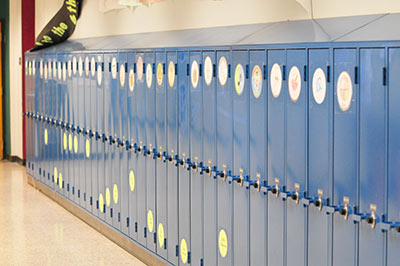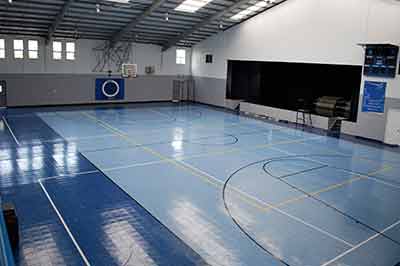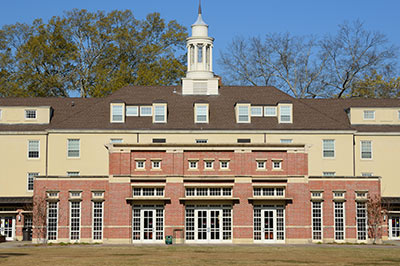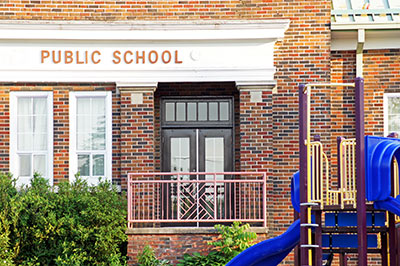Duncanson, E. (2014). Research has shown that rooms with greater amounts of open floor space have higher test results. Four recent trends that have negatively impacted open space in classrooms: (1) storage of CCSS materials in the classroom, (2) storage of science kits in the classroom, (3) inability to remove unwanted material, and (4) inability to remove unneeded furniture from the classroom. Teachers have reacted to the loss of classroom space: (1) desks are rearranged frequently to create specific spaces needed for an activity; (2) daily planning considers the use of space; (3) hallways and the library are used to increase student space; (4) the amount of materials readily available for student use have been reduced. (5) tall book cases have replaced horizontal models; (6) the size of interest/exploration centers had decreased. Administrators need to create a system to dispose of unwanted materials. The center for school improvement resides in the classroom.






 Earthman, G. (2013). Dr. Earthman wrote about the catastrophes that can occur at any place and for any reason. Within the past years an extraordinarily high number of catastrophic events have happened to public schools. From a high number of tornados to excessive flooding and unseasonable weather, the country has experienced a considerable number of very difficult environmental disasters that have adversely affected schools. These are never pleasant occurrences and it is the duty of education officials to ameliorate the subsequent devastation. Such was the case in a school system in Virginia where the roof of the gymnasium collapsed during a snowstorm in the middle of the school year. At the beginning of the spring semester, the high school students were without a place to continue their schooling. The planning efforts of the school authorities were strained for several reasons. Questions regarding the continued use of the high school building for the remainder of the year and where to put the student body for the rest of the year if the building was unusable were of utmost concern. The concerns and maneuvering of the various players in this drama are discussed in this article. In spite of the fact that this was a catastrophe to the various groups within and outside the school system, plans were made and executed so that all students were housed for the semester. The planning activities for the following year are set forth as well as the manner in which the school division staff conducted the effort and interacted with the community and governing body. The lessons that can be learned from the planning effort of this school staff are carefully analyzed and discussed.
Earthman, G. (2013). Dr. Earthman wrote about the catastrophes that can occur at any place and for any reason. Within the past years an extraordinarily high number of catastrophic events have happened to public schools. From a high number of tornados to excessive flooding and unseasonable weather, the country has experienced a considerable number of very difficult environmental disasters that have adversely affected schools. These are never pleasant occurrences and it is the duty of education officials to ameliorate the subsequent devastation. Such was the case in a school system in Virginia where the roof of the gymnasium collapsed during a snowstorm in the middle of the school year. At the beginning of the spring semester, the high school students were without a place to continue their schooling. The planning efforts of the school authorities were strained for several reasons. Questions regarding the continued use of the high school building for the remainder of the year and where to put the student body for the rest of the year if the building was unusable were of utmost concern. The concerns and maneuvering of the various players in this drama are discussed in this article. In spite of the fact that this was a catastrophe to the various groups within and outside the school system, plans were made and executed so that all students were housed for the semester. The planning activities for the following year are set forth as well as the manner in which the school division staff conducted the effort and interacted with the community and governing body. The lessons that can be learned from the planning effort of this school staff are carefully analyzed and discussed.
 Chan, T. C. (2013). The primary goal of the study was to examine green environmental practices exercised in maintaining healthy schools in Atlanta. A forty item researcher developed instrument was used to survey 30 randomly sampled schools in the Atlanta area. Analysis did not find any relationship between green school implementation and school building age, school ethnicity, and socioeconomic status of school communities. Dr. Chan noted: "Recognizing the importance of green school programs to the future generation, school leaders need to commit themselves to establishing green school development policies, adopting sustainable school designs, initiating substantial green school operating practices, and developing educational programs to promote green school concepts. School leaders have a major responsibility in turning our schools green.
Chan, T. C. (2013). The primary goal of the study was to examine green environmental practices exercised in maintaining healthy schools in Atlanta. A forty item researcher developed instrument was used to survey 30 randomly sampled schools in the Atlanta area. Analysis did not find any relationship between green school implementation and school building age, school ethnicity, and socioeconomic status of school communities. Dr. Chan noted: "Recognizing the importance of green school programs to the future generation, school leaders need to commit themselves to establishing green school development policies, adopting sustainable school designs, initiating substantial green school operating practices, and developing educational programs to promote green school concepts. School leaders have a major responsibility in turning our schools green.
 Tanner, C. K. (2013). Dr. Tanner conducted his research about new learning environments being built and took into consideration numerous variables. For example, school systems consider the instructional needs of the students they serve, enrollment, and whether to replace or remodel an old building. The concept of “going green” encourages school system planners to consider the natural surroundings and built environment that surrounds the school, thereby allowing the school's architecture to match its surroundings. This notion has sparked an interest in sustainable design, which may best be explained as minimizing the harmful effects of the building on the environment. It further extends to the theory of biophilia or a natural attraction to living systems. Sustainability and the biophilia premise go far beyond just following new codes for construction and materials related to Leadership in Energy and Environmental Design certification. They link directly to aesthetics.
Tanner, C. K. (2013). Dr. Tanner conducted his research about new learning environments being built and took into consideration numerous variables. For example, school systems consider the instructional needs of the students they serve, enrollment, and whether to replace or remodel an old building. The concept of “going green” encourages school system planners to consider the natural surroundings and built environment that surrounds the school, thereby allowing the school's architecture to match its surroundings. This notion has sparked an interest in sustainable design, which may best be explained as minimizing the harmful effects of the building on the environment. It further extends to the theory of biophilia or a natural attraction to living systems. Sustainability and the biophilia premise go far beyond just following new codes for construction and materials related to Leadership in Energy and Environmental Design certification. They link directly to aesthetics.


